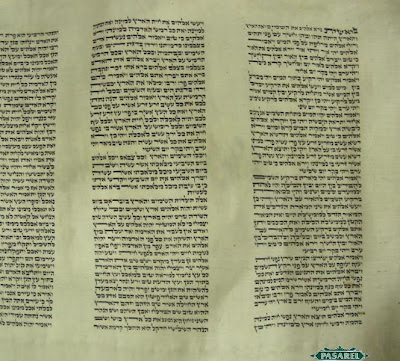Popular posts from this blog
Klaff Tanning question:
By
Rabbi Eli Gutnick
-
I received this question via email. I am not really a klaf expert, I was wondering if anyone could answer this question: Dear Rabbi Gutnick, I am writing to you because a good friend of mine has put the idea into my head that the klaf in my tefillin were not really tanned and therefore are not kosher. He referred me to Megilla 19a re diftera. From the research that I have done so far, it seems that the klaf that is used today is tanned only with a lime wash. On all of the tanning websites I’ve seen so far, they say that the lime doesn’t accomplish tanning but only the removal of the hair and some other pre-tanning effects. Would you be able to explain to me or refer me to a website that explains how the tanning process that is used today takes the hide out of the category of diftera? Thank you very much.
Rabbi Reuvain Mendlowitz clarifies his position on Ksav Chabad (and my final thoughts)
By
Rabbi Eli Gutnick
-
Last week I posted some thoughts in response to a public lecture given by Rabbi Reuvain Mendlowitz regarding Ksav Chabad (the Alter Rebbe's ksav). I felt he did not represent the issue fairly, and since I had received questions about it from a number of people I felt it made sense to write a general response. After I posted my response on this forum, Rabbi Mendlowitz reached out to me by email and we ended up having a respectful and productive email exchange regarding the relevant issues surrounding Ksav Chabad. His position is a lot clearer to me now, and I think he also took certain things on board that I clarified with him. The purpose of the Stam Forum (at least back in it's heyday before all the whats app groups took over) was to connect sofrim from around the world, to promote achdus and build bridges, as well as to offer support and advice. In that spirit, I felt I should write a follow up post, to clarify some of the issues and misconception...


Most likely it is just a byproduct of the haschola being done in a public ceremony. They honored a few important people to write the letters of Bereishis. Or they may have had a local sofer write the letters publicly and then had the rest of the sefer written by a different sofer. It doesn't look like it was done beshita because the beis is even bigger than the other letters.
ReplyDeleteBut perhaps I am wrong?
No this isn't a by product. This is most likely deliberate as there is a m'kor for this which is Masechet Sofrim 9:1 which says the bet should have four taggin and the letters of the WORD should be extended than all the other letters. This was an original tradition - I have seen this in a couple of other sifrey, one from Morocco. http://www.sofer.co.uk/html/large_letters.html has a picture.
ReplyDeleteThis fell out of use and is now just a large bet.
At the suggestion of my safrus rebbi in New York, I'm going to write the seller and try to get an appointment to look at it. We've been discussing it and expect some interesting variations.
ReplyDelete